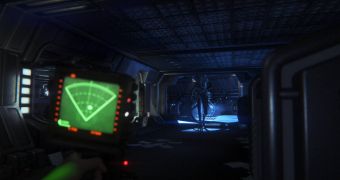
#ALIEN ISOLATION IGN MOVIE#
The Quarrantine’s medical facility was based on the movie set’s sick bay in which Kane was treated following his encounter with a facehugger. The entire Sevastopol Station draws heavily on the retro-futuristic style of Alien, and its architecture is directly informed by the design of the Nostromo freighter ship. It’s not just this alarm sequence that acts as a call back to the original film, though. “The emergency lighting state in San Cristobal was great fun to produce - the asynchronous patterns of the rolling lightings and strobes, supported by the audio, created a really disarming sense of chaos, disorienting the player, and heightening the tension.”

“The alarm sequence was a great opportunity to reference the Nostromo destruction sequence in the original movie,” Bond says. But just minutes into your search the entire facility is put into lockdown as the xenomorph arrives on the scene.

To access them, you first need to find a keycard belonging to the deceased Dr. Following the injury of a colleague you’re sent to the San Cristobal Medical Facility in search of supplies. In the events leading up to The Quarantine, you have discovered that a full-grown xenomorph is skulking through the vents and corridors of the vast Sevastopol Station. As such, it was the first opportunity in the game for us to fully showcase the enormous amount of work we’d put into the creature.” “Evidently, we’d developed complex AI and behavioural systems, scripting, and level mark-up too. “An insane amount of work went into shaping the creature from a visual perspective - everything from the development of its physiology, through to modelling, animation and VFX,” he says. “The creature was fully off the leash Amanda had the motion tracker and a job to do, she was on safari with the Alien, set for a deadly game of hide and seek.” “This was the first encounter where we took the brakes off, the first ‘real’ encounter if you like,” explains Jude Bond, lead artist on Alien: Isolation.

#ALIEN ISOLATION IGN FULL#
Its structural perfection is matched only by its hostility.”ĭuring Alien: Isolation’s opening missions the xenomorph is only glimpsed in scripted moments, but in The Quarantine it’s finally given full freedom to stalk you. It is, to quote Ash, “A perfect organism. It can even learn your survival tactics and adapt to outsmart you. This terrifying creature is able to explore environments of its own volition, hunting you down through sight and sound. To create a believable, relentless predator, Creative Assembly programmed its xenomorph with advanced artificial intelligence. The only thing you can do is try to survive. Much like in the 1979 horror classic, there’s just a single xenomorph in Alien: Isolation and you’re powerless to stop it.

Prior games in the franchise depicted the aliens as cannon fodder for gung-ho Colonial Marines, but Creative Assembly looked to Ridley Scott’s tense original film, not James Cameron’s action-packed sequel, for inspiration. The core of Alien: Isolation is a cat and mouse chase between your protagonist, Amanda Ripley, and the xenomorph. To find out how The Quarantine was made we spoke to two of the game’s developers about how Creative Assembly brought together astonishing AI, clever looping level design, and cutting edge lighting to inject pure terror into your first encounter with the alien. But recreating the terror experienced by Ellen Ripley in the original film took more than authentic visuals and sound effects. This is where Creative Assembly truly brought the Alien fantasy to life. Armed with little more than the iconic motion tracker, you must evade and escape cinema’s most terrifying predator. The game’s fifth mission, The Quarantine, marks the first moment in which the xenomorph actively hunts you through Sevastopol Station.


 0 kommentar(er)
0 kommentar(er)
